Akita and more
- Sort by
- Popularity
- Name
-
Kutani ware Kutani yaki
- Ceramic
- Ishikawa

Kutani ware (called Kutani yaki in Japanese) is a type of pottery manufactured in and around the city of Kaga in Ishikawa prefecture. It is a traditional handicraft that was first produced during the early Edo period (beginning of the 17th century…
View more
-
Hagi ware Hagi yaki
- Ceramic
- Yamaguchi
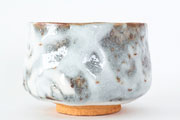
Hagi ware (called Hagi yaki in Japanese) is a form of porcelain produced mainly in the city of Hagi in Yamaguchi prefecture. Hagi ware is rarely decorated, remaining as simple as possible to make the most of the features of the clay. This simplici…
View more
-
Wajima lacquerware Wajima nuri
- Lacquerware
- Ishikawa

Wajima lacquerware (called Wajima nuri in Japanese) is made in the city of Wajima, Ishikawa prefecture. The most notable features of Wajima lacquerware are not only its beautiful finish but also the high quality powder used for its production call…
View more
-
Kaga textiles Kaga yuzen
- Dyed textiles
- Ishikawa
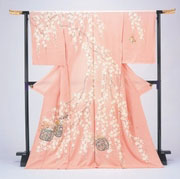
Kaga textiles (called Kaga yuzen in Japanese) are kimonos produced around the city of Kanazawa, Ishikawa prefecture. This craft is noteworthy because of its use of five underlying tones: indigo, khaki, green, dark reddish purple, and deep red. Kyo…
View more
-
Nishijin brocade Nishijin ori
- Woven textiles
- Kyoto
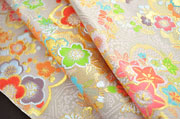
Nishijin brocade (called Nishijin ori in Japanese) is woven silk produced in the northwestern part of Kyoto. Kamigyo ward and Kita ward cover this area of Kyoto today, but this area is called Nishijin. According to official rules, only the brocade…
View more
-
Kyo textiles Kyo yuzen
- Dyed textiles
- Kyoto

Kyo textiles are dyed textiles made throughout Kyoto prefecture that feature a wide range of vivid colors and a technique of pictorial designs of animals, nature and daily items called yuzenmoyo. The dyeing method is very unique as artisans put gl…
View more
-
Kyo folding fans Kyo sensu
- Other crafts
- Kyoto
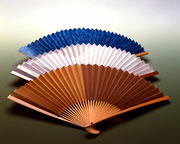
Kyo folding fans (called Kyo sensu in Japanese with sensu meaning folding fan) are mainly produced in Kyoto. From ancient times they have been valued as high quality art works because of their beautiful designs with gold or silver leaves or gold l…
View more
-
Echizen traditional Japanese paper Echizen washi
- Traditional Japanese paper
- Fukui
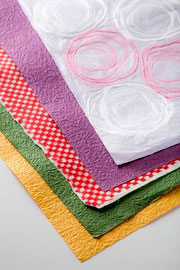
Echizen washi is a Japanese traditional paper made in the basin of the Okafuto river of the Echizen region, Fukui prefecture. Washi is made mostly from the inner bark fibers of plants such as paper mulberry, paperbush, and ganpi. Echizen washi fea…
View more
-
Ushikubi tsumugi silk Ushikubi tsumugi
- Woven textiles
- Ishikawa
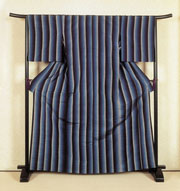
Ushikubi tsumugi is a silk textile produced in the city of Hakusan, Ishikawa prefecture. It was recognized as a traditional craft in 1988. Some distinctive features of Ushikubi (which literally translates to cow's neck) tsumugi silk are its m…
View more
-
Yamanaka lacquerware Yamanaka shikki
- Lacquerware
- Ishikawa
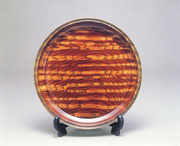
Yamanaka lacquerware (called Yamanaka shikki in Japanese) is a type of lacquerware made in the Yamanaka Onsen (hot spring) district of the city of Kaga, Ishikawa prefecture. It utilizes an original Yamanaka technique for grinding wood. The main ob…
View more
-
Kaba cherrybark woodcrafts Kaba zaiku
- Wood, bamboo crafts
- Akita
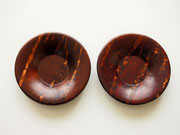
Kaba cherrybark woodcrafts (called Kaba zaiku in Japanese) are a type of wood bark craft produced in the former town of Kakunodate, Akita prefecture. While the character for kaba means birch, for this context the word refers to the bark of wild ch…
View more
-
Odate bentwood Odate mage wappa
- Wood, bamboo crafts
- Akita
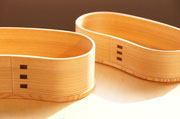
Odate mage-wappa is a bentwood craft produced all over the city of Odate, Akita prefecture. This craft is well-known both domestically and abroad for having a beautiful curved shape and being lightweight. The key feature of Odate bentwood is the b…
View more
-
Kawatsura lacquerware Kawatsura shikki
- Lacquerware
- Akita
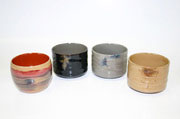
Kawatsura lacquerware (called Kawatsura shikki in Japanese) is produced in the town of Kawatsura in the southern part of Akita prefecture. Everyday use items like bowls and trays have been produced here for a long time. Kawatsura lacquerware has e…
View more
-
Echizen lacquerware Echizen shikki
- Lacquerware
- Fukui
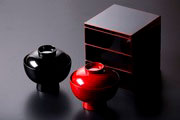
Echizen lacquerware (called Echizen shikki in Japanese) is produced in the area around the city of Sabae in Fukui prefecture. Lacquer is at the center of life in the Echizen district of Sabae, which is known as the city of manufacturing. The notab…
View more
-
Kiso lacquerware Kiso shikki
- Lacquerware
- Nagano
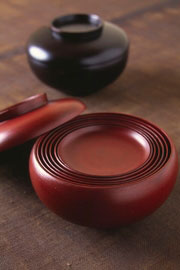
Kiso lacquerware (called Kiso shikki in Japanese) is produced in Kiso district, now the city of Shiojiri, Nagano prefecture. The area where this craft is produced is a plateau approximately 900 meters above sea level. The climate has cool summers…
View more
-
Matsumoto furniture Matsumoto kagu
- Wood, bamboo crafts
- Nagano

Matsumoto kagu is a type of Japanese traditional furniture made in the city of Matsumoto in Nagano prefecture and has been produced for over three hundred years, since the Edo period (1603-1868). The Second World War led production of this craft t…
View more
-
Kyo doll Kyo ningyo
- Dolls, kokeshi
- Kyoto
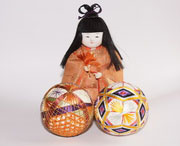
Kyo dolls (called Kyo ningyo in Japanese) are produced in the city of Kyoto and its surrounding areas in Kyoto prefecture. They are made by several different artisans with their specialized expertise. There are doll head artisans as well as those …
View more
-
Akama inkstone Akama suzuri
- Writing tools
- Yamaguchi
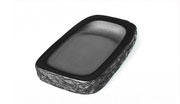
Akama inkstone (called Akama suzuri in Japanese) is produced around the cities of Shimonoseki and Ube in Yamaguchi prefecture. A type of stone called akama, an ideal material for producing the inkstones, is used for Akama inkstone. Therefore this …
View more
-
Echizen ware Echizen yaki
- Ceramic
- Fukui
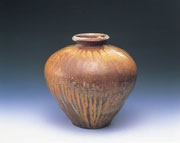
Echizen ware (called Echizen yaki in Japanese) is a type of pottery produced in the town of Echizen, Fukui prefecture. This traditional handicraft comes from one of the Six Ancient Kilns of Japan which along with Bizen, Tamba, Tokoname, Seto, and …
View more
-
Kyo uchiwa fans Kyo uchiwa
- Other crafts
- Kyoto
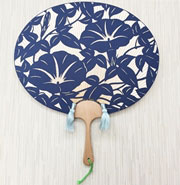
Kyo uchiwa are a type of fan made in Kyoto prefecture. From the many types of Japanese traditional fans, there are three broad categories: Chinese-inspired, southern-inspired, and Korean-inspired with this craft coming from the third category. Th…
View more
-
Tendo Japanese chess pieces Tendo shogi koma
- Other crafts
- Yamagata
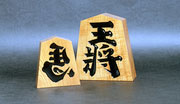
Tendo Japanese chess pieces (called Tendo shogi koma in Japanese) are made in the cities of Tendo, Yamagata, and Murayama in Yamagata prefecture. Production is thought to have begun in Tendo back during the Edo period (1603-1868) and now the city …
View more
-
Yamagata cast iron Yamagata imono
- Metal works
- Yamagata
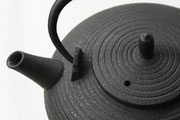
Yamagata cast iron (called Yamagata imono in Japanese) is produced in the city of Yamagata, Yamagata prefecture. At first, metal fittings, Buddhist statues, and daily use items were made. Then, as skills and techniques were developed, iron kettles…
View more
-
Wakasa lacquerware Wakasa nuri
- Lacquerware
- Fukui

Wakasa lacquerware (called Wakasa-nuri in Japanese) is produced in the area around the city of Obama, Fukui prefecture. It is said to have originated in the early Edo period (1603-1868) when a craftsman serving the Obama domain (now the city of Ob…
View more
-
Ouchi lacquerware Ouchi nuri
- Lacquerware
- Yamaguchi
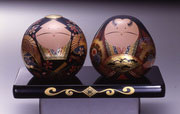
Ouchi lacquerware (called Ouchi nuri in Japanese) is produced around the city of Yamaguchi, in Yamaguchi prefecture. This craft emerged under the Ouchi clan, which boasted significant influence and power in the region during the Muromachi period (…
View more
-
Echizen cutlery Echizen uchihamono
- Metal works
- Fukui
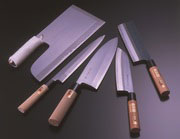
Echizen cutlery (called Echizen uchihamono in Japanese) is produced around the city of Echizen, Fukui prefecture. A double layering technique is used for knives and a rotated steel joining technique for sickles. Double layering is a forging method…
View more
-
Kanazawa gold leaf Kanazawa haku
- Industrial art materials and tools
- Ishikawa
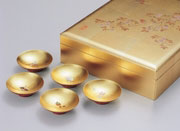
The word haku means metal leaf and Kanazawa haku is gold leaf produced in and around the city of Kanazawa, Ishikawa prefecture. This craft possesses the dazzling and elegant radiance of gold even after being worked on by craftsmen. A small piece o…
View more
-
Kanazawa lacquerware Kanazawa shikki
- Lacquerware
- Ishikawa
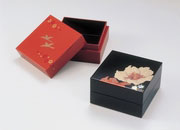
Kanazawa lacquerware (called Kanazawa shikki in Japanese) is produced in the area around the city of Kanazawa, in Ishikawa prefecture. It was developed for the liking of feudal lords as it had the financial backing of the Kaga domain (present day …
View more
-
Kyo ware/Kiyomizu ware Kyo yaki Kiyomizu yaki
- Ceramic
- Kyoto

Kyo-ware/Kiyomizu-ware (called Kyo yaki/Kiyomizu yaki in Japanese) is a type of pottery produced in the Kyoto area. Originally, Kyo-ware was a general term for all pottery produced in Kyoto, while Kiyomizu-ware specifically referred to pottery pro…
View more
-
Kyo laquerware Kyo shikki
- Lacquerware
- Kyoto

Kyo lacquerware (called Kyo shikki in Japanese) is produced in the Kyoto area. Since it developed at the same time as the tea ceremony culture, this craft possesses a wabi-sabi* quality. Kyo lacquerware has a thinner and more delicate wood grain t…
View more
-
Oitama tsumugi silk Oitama tsumugi
- Woven textiles
- Yamagata
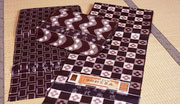
Oitama tsumugi is a silk fabric produced in the Yonezawa, Hakutaka and Nagai regions of Oitama in southern Yamagata prefecture. The area was well-known for producing and exporting ramie, a tall plant of the nettle family that has been used to make…
View more

































































































































































































































































































